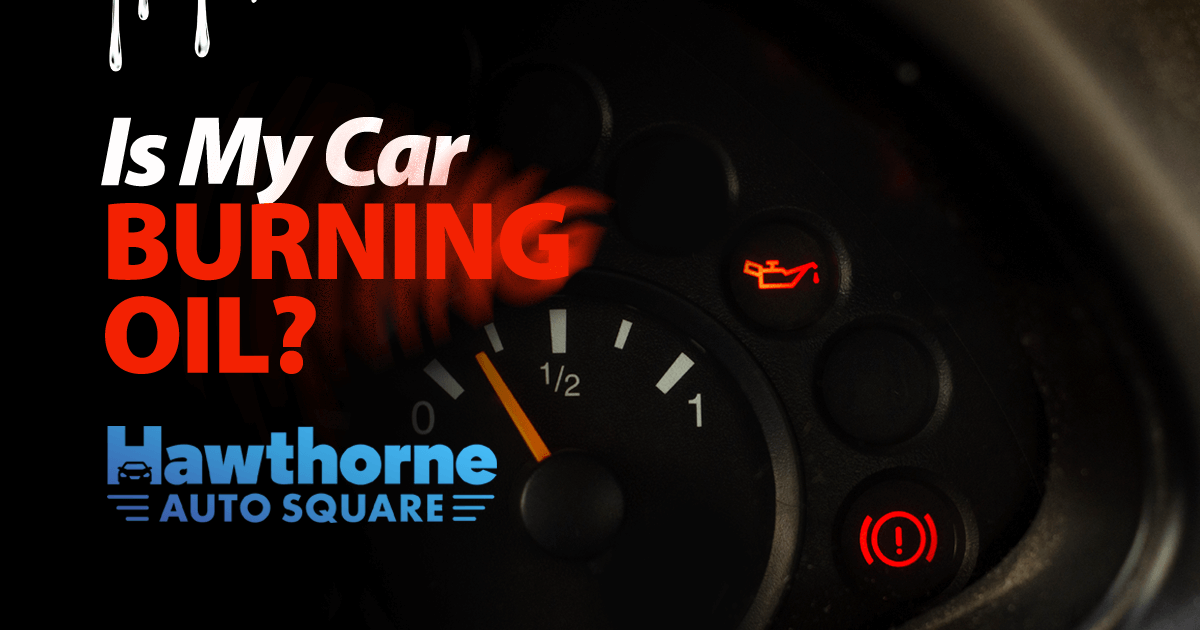
- SALES : (866) 707-7664
- PAYMENTS : (866) 902-7955
- 11646 PRAIRIE AVE, HAWTHORNE, CA 90250
- MON - SAT 8AM - 8PM | SUN 10AM - 6PM
- SALES : (866) 707-7664
- PAYMENTS : (866) 902-7955
- 11646 PRAIRIE AVE, HAWTHORNE, CA 90250
- MON - SAT 8AM - 8PM | SUN 10AM - 6PM
Is My Car Burning Oil?

Just because oil isn’t leaking onto the ground doesn’t mean your car isn’t losing oil. A car burning oil in the combustion chamber is a serious problem. Worn seals, leaky gaskets, a damaged oil pan, or poorly attached oil filter can cause this to happen. There may also be a worn out, loose, or missing filler cap. But how do you know your car is burning oil, and what can you do about it. We’ll now look at ways to identify the problem and possible solutions.
Signs of Burning Oil
Symptoms to look out for include:
- Low Oil: If your oil is low but not leaking, chances are it’s burning up in the engine. This can cause you to lose even more oil, leading to major engine damage. Repairs can be very expensive, specially for a vehicle with more than 100,000 miles. If your car has less than 50,000 miles, it shouldn’t lose more than a quart between oil changes.
- Blue-Tinted Smoke: You may see a bluish smoke from the exhaust if your engine is burning significant amounts of oil. However, this might not be so evident if it’s only burning small amounts or your car uses synthetic oil. Therefore, the engine can be burning oil even if there isn’t any smoke.
- Low Levels on the Dipstick: You can check the oil level directly with the dipstick under the hood. Remove the dipstick from the engine (when it is cool), wipe it with a clean cloth, and reinsert it into the oil chamber. The level on the stick indicates how much is in the tank. If the oil level drops steadily as you check it over time, that’s a sign of your car burning oil.
- You Smell Burning Oil: Burning oil has a distinct odor that’s hard to ignore. You can smell it inside and outside the vehicle. If this acrid odor is present, take your vehicle to a mechanic or dealer for an oil change and immediate repairs.
- Oil Light: Seeing the oil light often on the dashboard is a clear indicator the oil level is low and that your car is burning oil.
What If I Ignore the Issue?
Your car will continue running if you keep adding oil. But since oil isn’t burning properly in the cylinders, the engine may start to run rough. Oil can coat the spark plugs and cause them to malfunction. It may damage the catalytic converter as well, while low oil can cause the engine to seize. The issue should therefore be addressed sooner rather than later.
Can the Problem Be Fixed?
If the positive crankcase ventilation (PCV) valve is faulty, replacing it is generally a simple job for an automotive technician. The PCV valve routes excess gases back to the combustion chamber, so they’re burned a second time before exhausted. If it’s clogged, oil gets sucked back in through the air intake. There are also various other parts that can wear or fail; many can be replaced to resolve the burning oil problem.
Other issues, such as worn-out piston rings or deteriorated cylinder walls (which disrupt the engine’s seal), are not as easy to fix. Repairing a faulty seal can be expensive. If a valve stem seal is faulty, oil may leak onto the cylinders and into the combustion chamber. Replacing a cylinder head or fixing a blown motor can cost thousands of dollars.
Find a High-Quality Used Vehicle at Hawthorne Auto Square
Is your car burning oil and need repairs that are just too expensive? Our extensive inventory of pre-owned vehicles includes hundreds of low-mileage, carefully inspected makes and models. We offer trade-in options and flexible financing. Visit our buy here, pay here dealership or call 866-707-7664 to schedule an appointment.
Latest News


Why Should I Buy a Used Toyota Camry?

Bankruptcy and Car Ownership: How BHPH Can Help


Used Car Price Trends for 2025: What Buyers & Sellers Need To Know
Get approved
It only takes a few minutes and won’t affect your credit.
- Pre-Inspected Cars
- Clean Title
- Under Warranty
Latest Videos
What Do I Need To Buy A Car - Hawthorne Auto Square
Second Chance for a New Car - Hawthorne Auto Square
Pre Approved Auto Lone – Hawthorne Auto Square
- SALES : (866) 707-7664
- PAYMENTS : (866) 902-7955
- 11646 PRAIRIE AVE, HAWTHORNE, CA 90250
- MON - SAT 8AM - 8PM | SUN 10AM - 6PM
© 2025 Hawthorne Auto Square. All Rights Reserved. Website Designed by: Ad Leverage | Privacy Policy | Terms of Service | Manage Cookies | DSAR |License #91864
© 2025 Hawthorne Auto Square. All Rights Reserved. Website Designed by:
Ad Leverage | Privacy Policy | Terms of Service
License #91864

